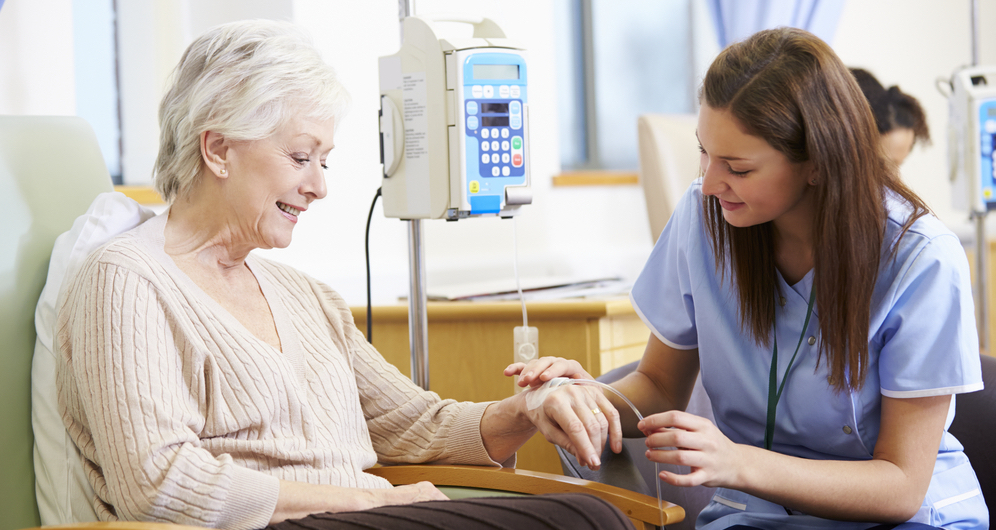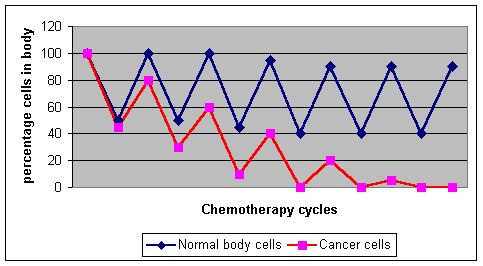|
|
|||||||||||||||||||||||||||
|
Chemotherapy |

|
||||||||||||||||||||||||||
What is chemotherapy? The use of drugs or chemicals to treat cancer. Conventional chemotherapy works by damaging the structure or metabolism of rapidly dividing cells. Your cancer specialist has a choice of over fifty different chemotherapy drugs that can be used as single agents or in a variety of different combinations. Chemotherapy can be given as the main cancer treatment (radical), to support the main treatment (adjuvant) or to improve symptoms (palliative) - see below. They can be given before or after surgery, before during or after radiotherapy or even in combination with biological agents. Factors such as the extent of your disease, your general condition, and the function of your liver and kidneys are taken into account. For this reason a number of common tests are often required before the start of chemotherapy.
In most cases, the exact dose of chemotherapy given to you is calculated by measuring your height and weight, then working out your surface area. In this way, treatment is individualised for each patient. The doses of chemotherapy may be modified during the whole course of treatment, based on your reaction to treatment, lifestyle and further blood and urine tests. A number of drugs are usually given to prevent or alleviate the side effects, symptoms and risks and these may change over the course of the regimen depending on how it is tolerated. Chemotherapy can be given in the form of oral tablets, or as a liquid injected into a vein in your arm using a device known as an intravenous cannula. Alternatively, it can be injected into a larger vein via a PICC line. This stays in during your chemotherapy course. Also chemotherapy can be given via a line inserted into the front of your chest via an apparatus called a central line. Central lines and PICC lines are permanent catheters introduced into a large vein before the start of chemotherapy, which avoids you having to have a new cannula for each course. Also it allows you to have blood taken without additional injections. Most chemotherapy drugs are given as an outpatient. Sometimes the drugs have to be preceded by intravenous fluids, and this has to be given as an inpatient staying usually one or two nights. An alternative way of administering chemotherapy is with a continuous infusion pump. In this situation, a drug is carried in a cassette and infused continuously into a central line, while the individual is able to be fully mobile at home or work. The common regimens for specific cancers explaining the common and rare side effects and risks are linked from the headings below. Information sheets on specific drugs or combinations can also be found from the search box. Prostate cancer:
Chemotherapy emergencies Commonly asked questions:
|
|||||||||||||||||||||||||||
 Chemotherapy is normally given in cycles, most commonly
two to four weeks apart, to a total of four to six months. Between cycles your
body's normal cells recover (blue line) but
cancer cells are less able to repair themselves
(red line). Over the entire chemotherapy
course its hoped that the cancer cells would have been destroyed, leaving the body a
little battered but intact.
Chemotherapy is normally given in cycles, most commonly
two to four weeks apart, to a total of four to six months. Between cycles your
body's normal cells recover (blue line) but
cancer cells are less able to repair themselves
(red line). Over the entire chemotherapy
course its hoped that the cancer cells would have been destroyed, leaving the body a
little battered but intact.




